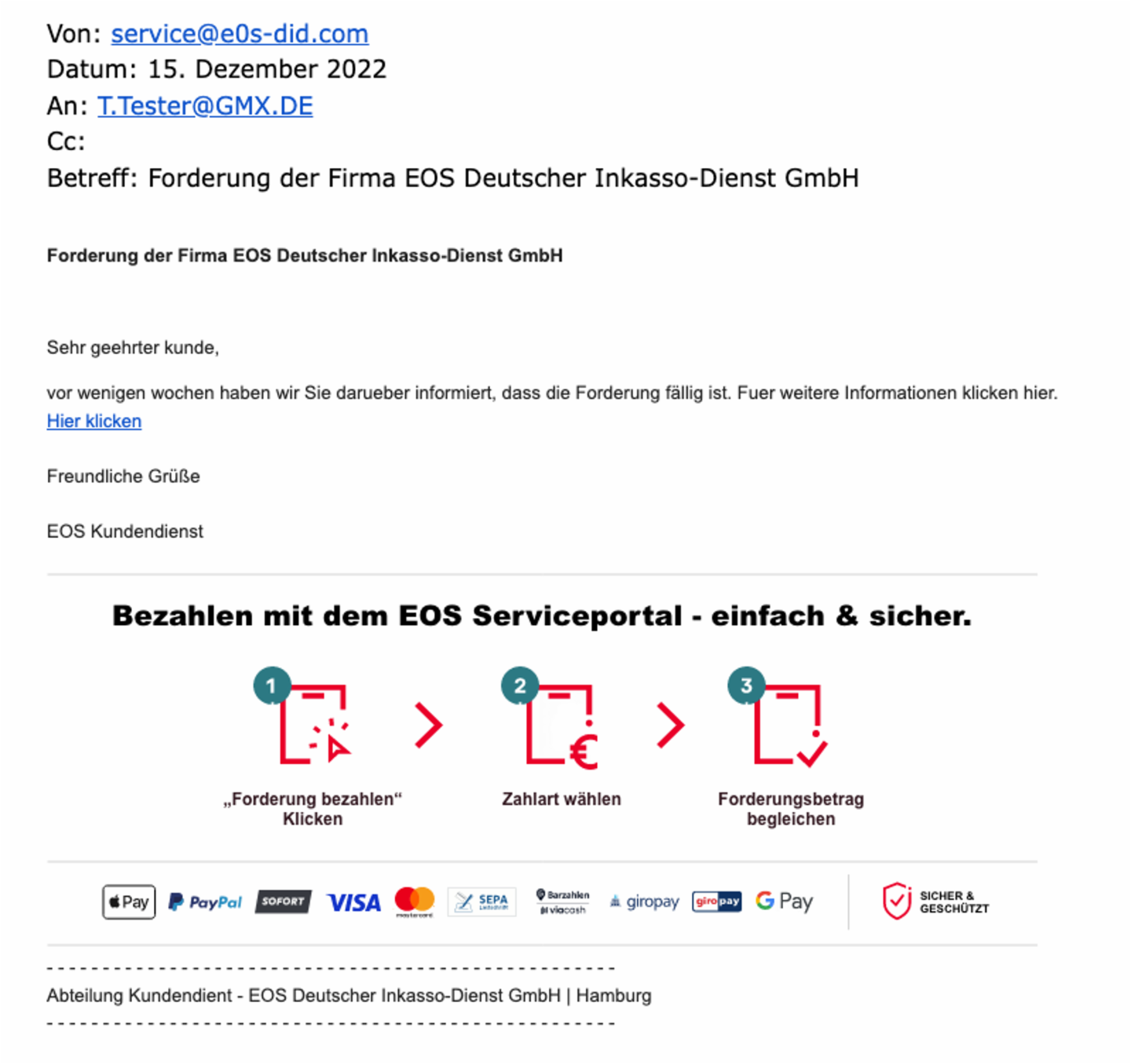What is phishing?
Why you need to protect yourself
With the help of phishing, criminals try to obtain personal data such as credit card numbers or access data for online banking. To do this, they use emails or letters that imitate the appearance of companies such as us. We at EOS will never ask you for passwords, online pins or similar. To check a claim or make an online payment, please always use the secure payment function in our service portal.
How can I report a scam?
Have you received a suspicious e-mail or mail from EOS?
Nowadays it is difficult to clearly recognize whether it is a genuine letter or a scam. If you receive an error message after entering your 11-digit claim number in our service portal or you are sure for other reasons that it is a phishing attempt, please send a message to our customer service.
Please consider carefully: Only contact us if you have reasonable grounds to suspect fraud or a mix-up. If it turns out that our letter is legitimate after all, the delay will only result in unnecessary costs that you will have to pay for. So check very carefully.
The letter is genuine, but you are sure that there has been identity theft? Then please complete the identity theft and mistaken identity check form and send it to us for processing.
Watch out: a phishing example
Emails or messages from scammers can look surprisingly genuine. But there are certain features that are relatively easy to unmask.
- Click on the sender address to see the actual sender, this may be constructed, e.g. E0S with a zero instead of an O
- No direct or missing form of address (e.g. Hello Mr./Mrs. Customer)
- Incorrect spelling and grammar
- Missing information on sender information
- Asking to click on an unspecified link
- Request to pay to a non-German bank account
Information on current phishing campaigns is provided by the consumer advice center with its Phishing-Radar.
Member of BDIU - Bundesverband Deutscher Inkasso-Unternehmen e. V.
More information on what a payment reminder should look like and what you should do in the event of identity theft can also be found on the website of the Bund Deutscher Inkassounternehmen (BDIU), of whom EOS is a member.

